If you’ve ever struggled with messy workflows, endless apps, or slow collaboration, you’re not alone. Traditional whiteboarding tools can make teamwork feel frustrating and disorganized. But with ClickUp Whiteboards 3.0, things have changed, allowing teams to rebuild their workflows for better efficiency and collaboration. This new tool allows you to brainstorm and share real-time updates with your team simple and fast.
But does it truly deliver on its promises? In this article, we’ll explore the key features of ClickUp Whiteboards 3.0, critically examine its pros and cons, and help you decide if it’s the right fit for your team.
What Are ClickUp Whiteboards 3.0?
ClickUp Whiteboards 3.0 reimagines the traditional whiteboard experience for digital collaboration. They serve as interactive spaces where teams can brainstorm, organize ideas, and turn concepts into actionable tasks. Unlike standalone tools, these whiteboards are embedded within the ClickUp platform, enabling seamless transitions between ideation and execution.
Core Capabilities:
- Brainstorming: Organize ideas visually to spark creativity.
- Planning: Build project roadmaps and workflows collaboratively.
- Diagramming: Map processes, hierarchies, or organizational structures.
- Meetings: Host interactive, productive discussions directly on the whiteboard.
- Mind Mapping: Structure complex ideas and relationships visually.
The idea is simple: integrate everything into one ecosystem to save time and reduce inefficiencies. But does this level of integration make sense for all teams, or is it better suited to those already using ClickUp?

The Limitations of Traditional Whiteboards
To understand the value of ClickUp Whiteboards 3.0, it’s important to consider the challenges posed by traditional tools, both physical and digital:
- Limited Collaboration: Most traditional tools lack real-time, multi-user capabilities.
- Disconnected Workflows: Ideas often remain isolated with no direct path to execution.
- Complex Interfaces: Many tools are not user-friendly, leading to inefficiencies.
- Time-Consuming Processes: Switching between apps for brainstorming, task management, and communication wastes valuable time.
- Restricted Sharing: Sharing ideas with stakeholders or teams is often cumbersome.
These challenges underline the need for a solution that addresses both usability and integration. Does ClickUp Whiteboards 3.0 meet these needs?
How ClickUp Whiteboards 3.0 Solves These Problems
ClickUp Whiteboards 3.0 aims to solve the above issues through its all-in-one platform, real-time collaboration, and robust task integration. However, it’s worth noting some potential trade-offs, like requiring familiarity with the ClickUp ecosystem.
Here’s how ClickUp Whiteboards 3.0 seeks to improve collaboration:
1. All-in-One Workspace
Whiteboards are integrated directly into the ClickUp platform. You can brainstorm, create tasks, and communicate with your team—all without leaving the app.
2. Real-Time Collaboration
Work with your team in real time. Updates happen instantly, and everyone sees changes as they occur, whether they’re brainstorming or refining plans.
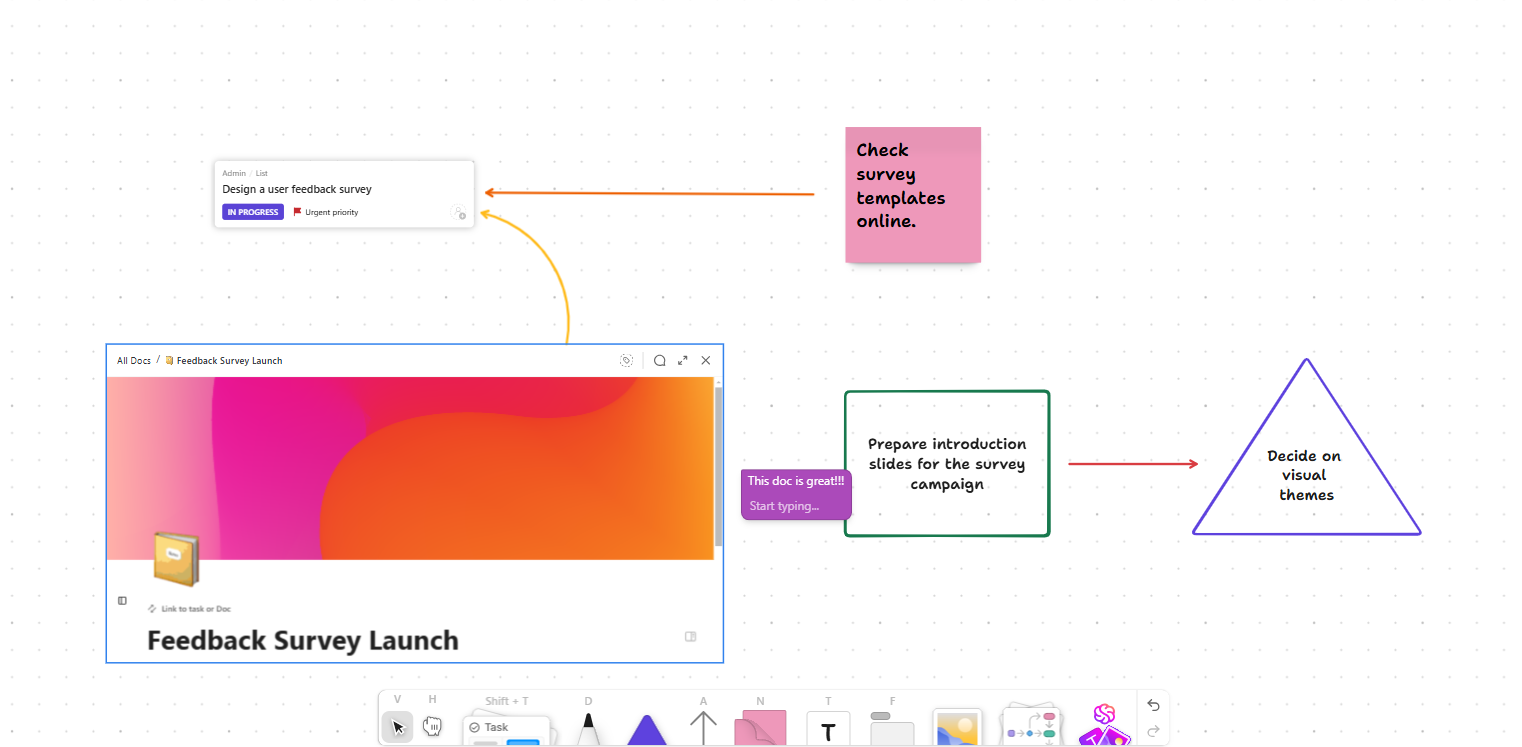
3. Task Integration
Turn any object on your whiteboard into a task with one click. Tasks are automatically linked to your project or workspace, ensuring smooth execution.
4. Intuitive Interface
The user-friendly design includes simple navigation, zooming, and editing features. Even new users can get started quickly.
5. Built-in AI Tools
ClickUp’s AI can generate visuals, organize brainstorms, and even create tasks from your ideas—all without switching apps.
6. Effortless Sharing
Share whiteboards instantly, embed them in ClickUp tasks, or export them as PDFs for external use.
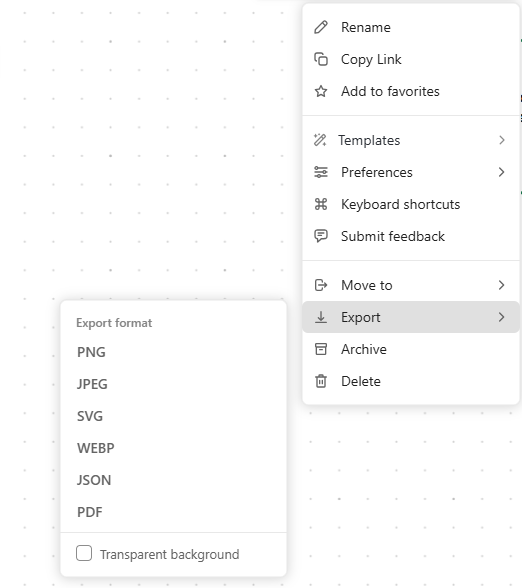
Key Features and Their Value
While ClickUp Whiteboards 3.0 introduces several innovative features, their value depends on your team’s needs. Here are some highlights:
1. Interactive Canvas
The canvas is your blank space to brainstorm and organize ideas. Add shapes, text, sticky notes, and images to create a visual representation of your thoughts.
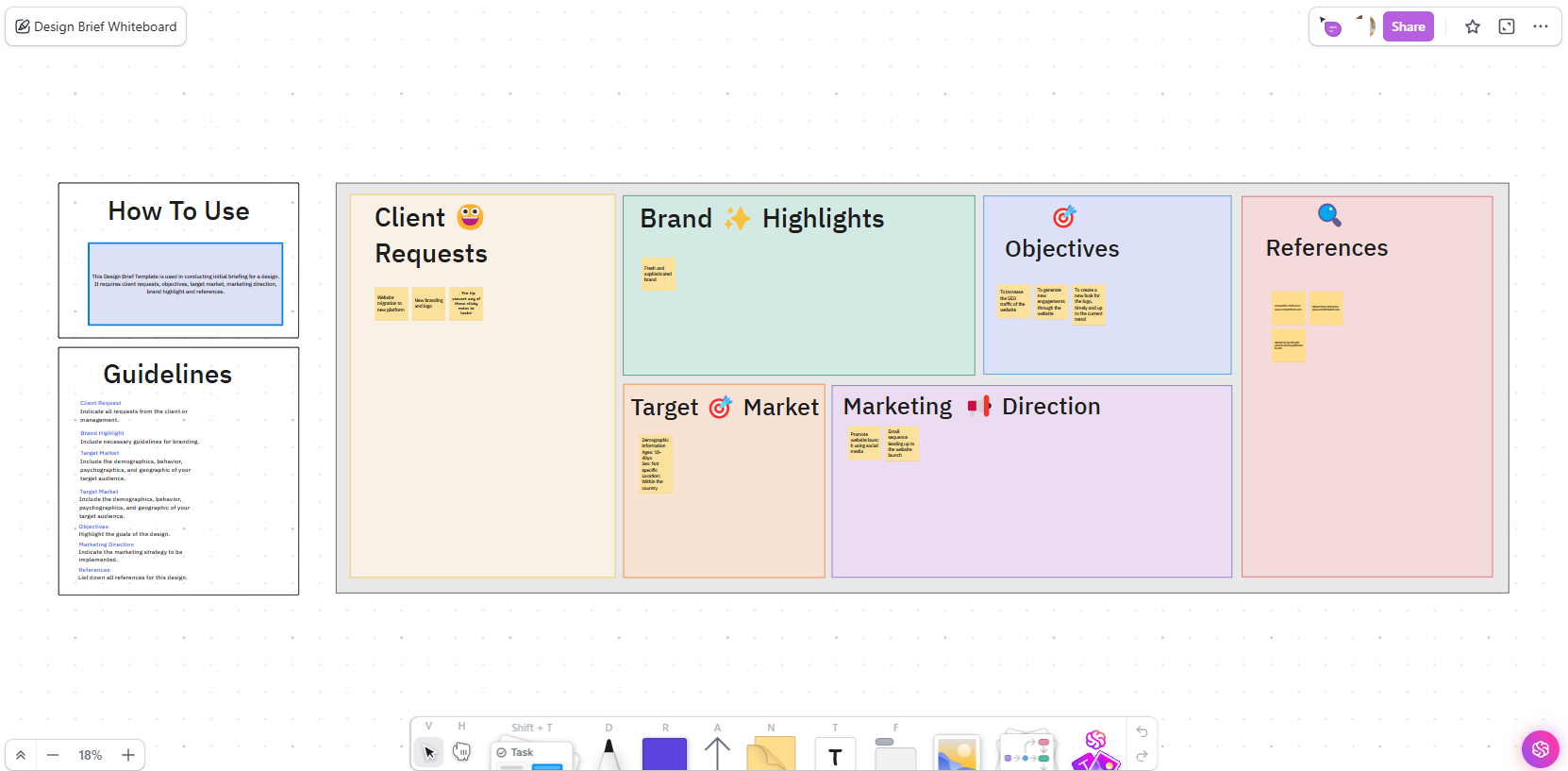
2. Pre-Built Templates
Save time by starting with ready-made templates. Choose templates for roadmaps, vision boards, task tracking, or brainstorming sessions. Customize them as needed to fit your project.
- Project roadmaps
- Process mapping
- Vision boards
- Task tracking
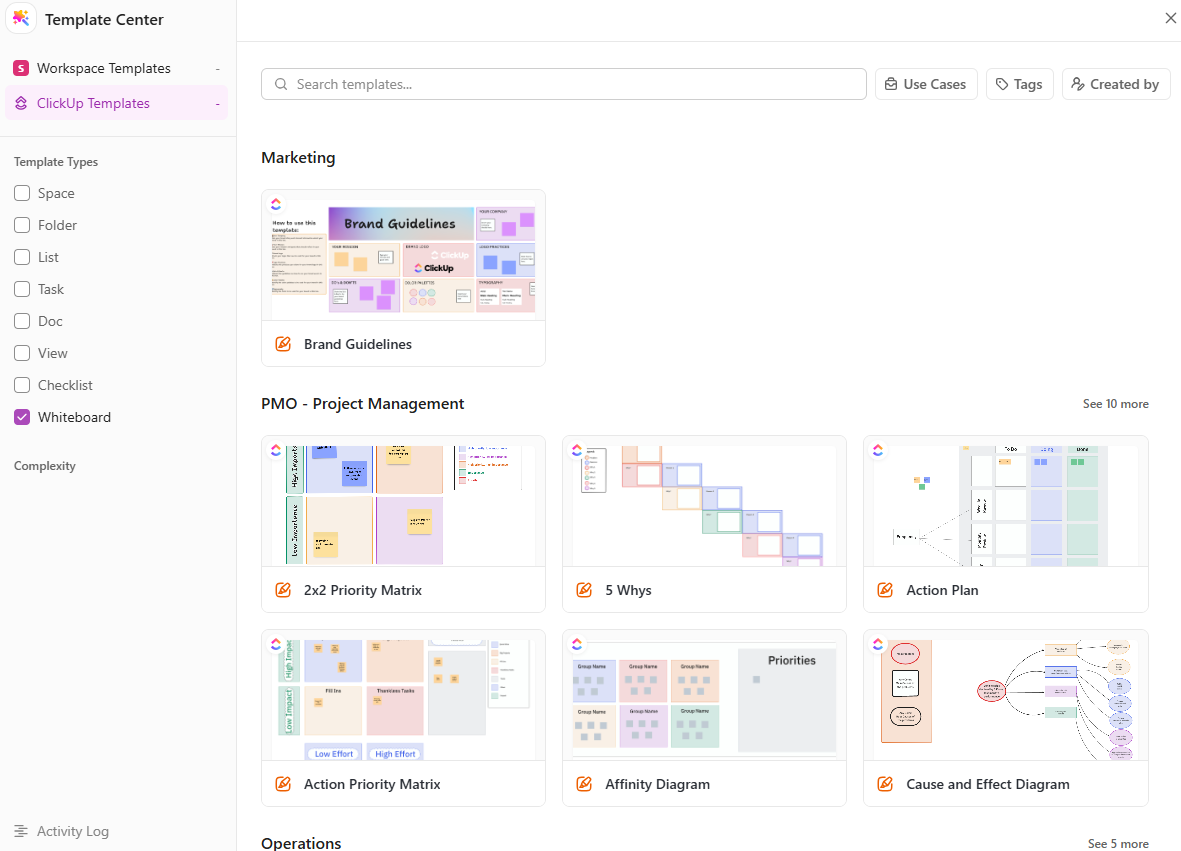
3. Mind Mapping Tools
Create mind maps to explore ideas, visualize relationships, or structure workflows. These tools are perfect for freeform brainstorming and hierarchical planning.
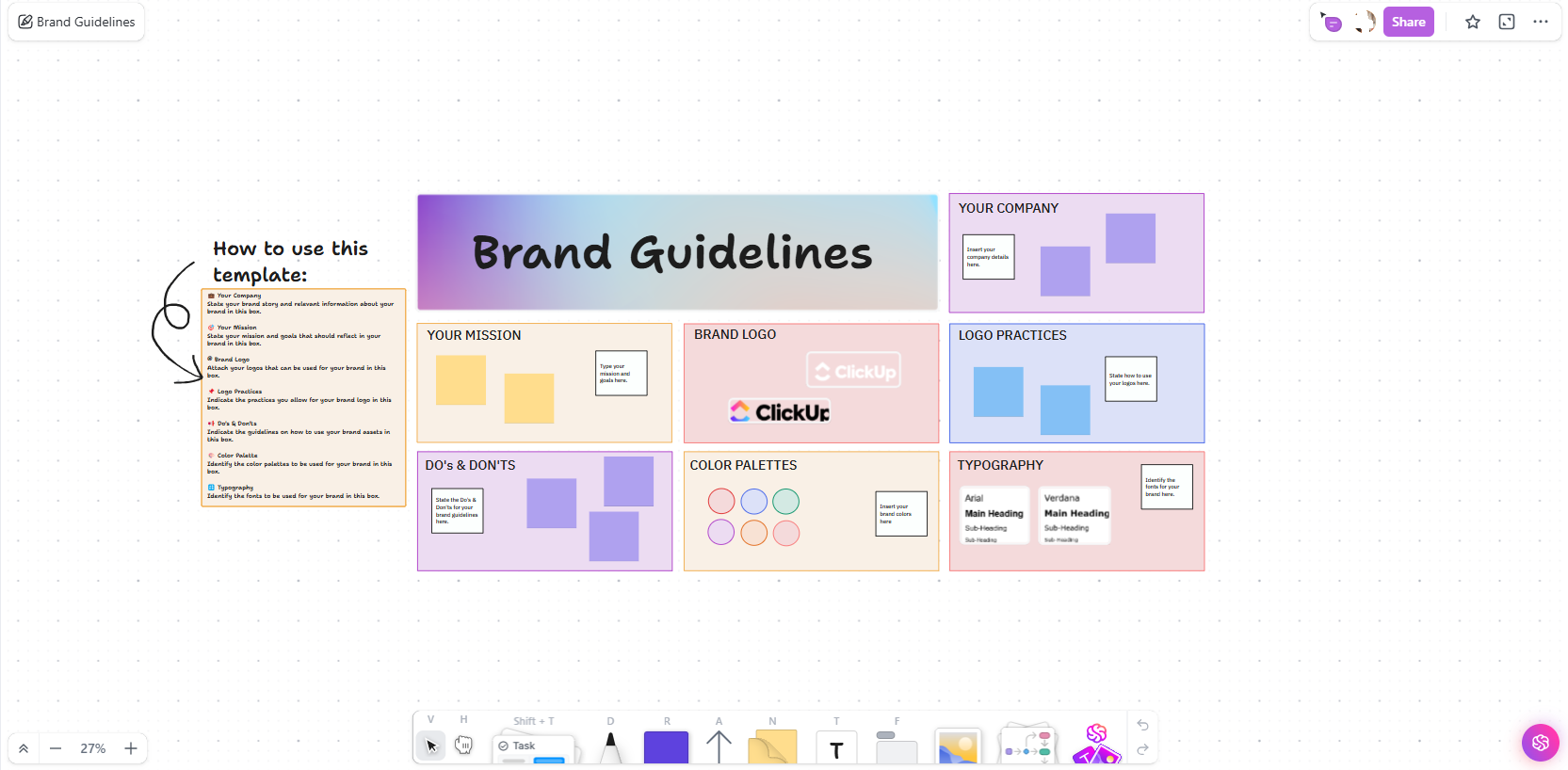
4. Sticky Notes
Use sticky notes to capture quick thoughts or ideas. You can place them anywhere on the canvas, connect them to tasks, or group them for better organization.
5. Shapes and Connectors
Build diagrams or flowcharts by adding shapes and connecting them with arrows. Use connectors to visually link tasks, ideas, or concepts.
6. Shapes and Connectors
Build flowcharts, diagrams, or organizational charts by adding shapes and connecting them with arrows. Use connectors to visually link tasks, ideas, or steps in a process.
7. Task Cards
Embed ClickUp tasks, docs, or lists into the whiteboard. These cards are fully interactive, so you can expand or edit them without leaving the canvas.
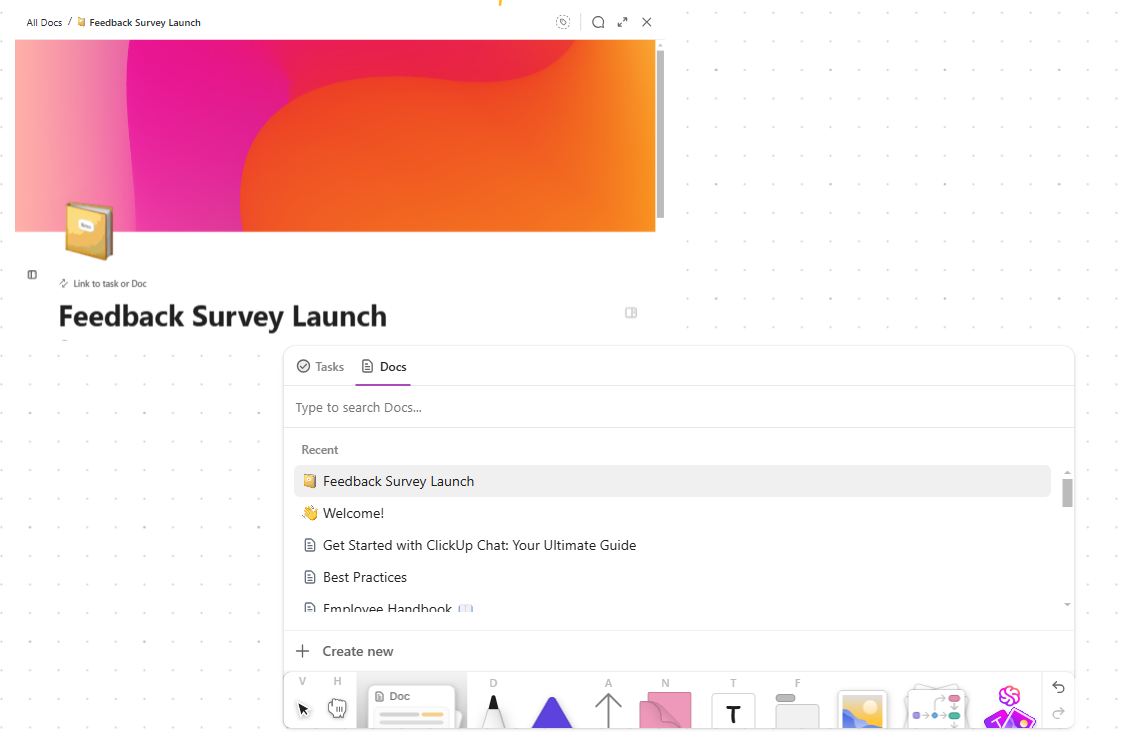
8. AI-Powered Visuals
Generate stunning images from text directly within the whiteboard. This feature is perfect for bringing abstract ideas to life.
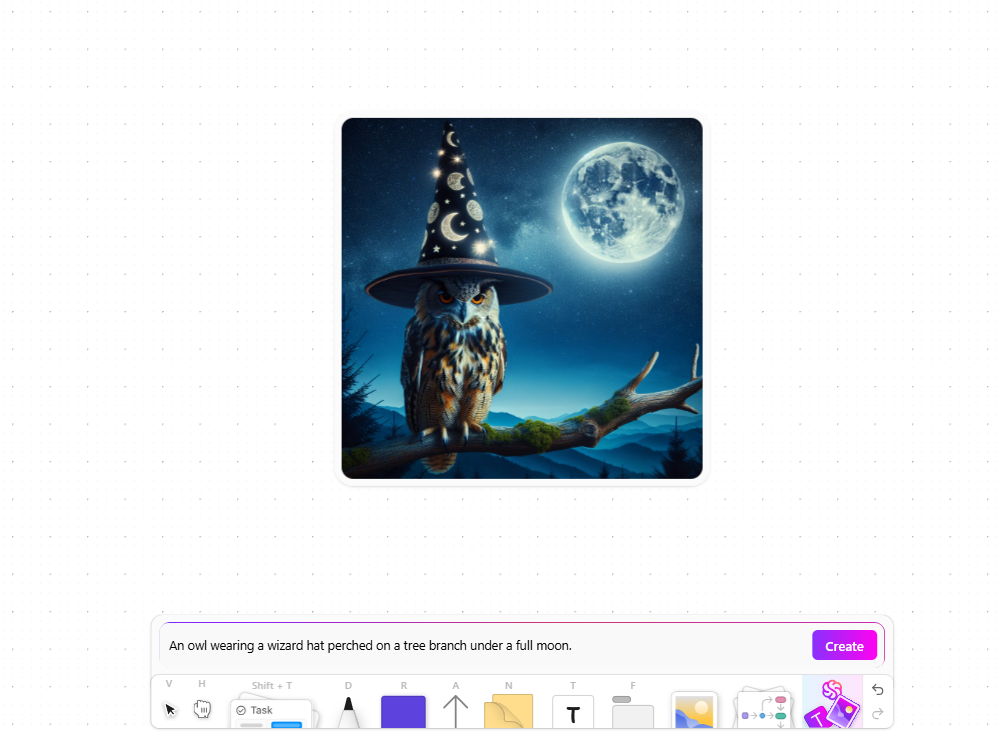
10. Touch-Friendly Interface
On mobile or tablets, use touch gestures like pinching, swiping, or dragging to interact with the whiteboard effortlessly.
11. Zoom and Navigation
Zoom in or out with touch gestures or keyboard shortcuts. Navigate the canvas effortlessly using drag-and-drop or hotkeys.
Old Way vs. New Way
❌ The Old Way
- Separate apps for brainstorming, tasks, and chats.
- Ideas disconnected from workflows.
- Manual updates and delays.
- Limited sharing options.
- Complex, outdated designs.
✔️ ClickUp Whiteboards 3.0
- All-in-one platform.
- Tasks linked directly to ideas.
- Real-time updates for faster collaboration.
- Instant sharing and PDF export.
- Simple, modern, and intuitive UI.
How to Get Started with ClickUp Whiteboards 3.0
Getting started with ClickUp Whiteboards 3.0 is easy. Follow these steps:
Getting started with ClickUp Whiteboards 3.0 is designed to be intuitive and straightforward, especially for teams already familiar with the ClickUp ecosystem. However, for new users, the setup process may require some adjustment to align with existing workflows. Here’s a step-by-step guide, along with considerations to keep in mind:
Step 1: Create a Whiteboard
Begin by adding a whiteboard to any space, folder, or list within ClickUp. To do this:
- Click the “Add View” button.
- Select “Whiteboards” from the dropdown menu.
- Name your whiteboard and save it to start working.
What to Watch Out For:
While the setup is simple, teams new to ClickUp may initially find it confusing to determine where the whiteboard best fits within their structure (e.g., at the space, folder, or list level). Defining your team’s hierarchy beforehand can help avoid organizational issues.
Step 2: Choose a Template or Start Fresh
You can start with a blank canvas or select from pre-built templates tailored for common use cases such as:
- Project roadmaps
- Process mapping
- Vision boards
- Task tracking
Templates are especially useful for teams looking to save time and ensure consistency.
What to Watch Out For:
Pre-built templates are great starting points but may require significant customization to fit niche workflows. If your team’s projects are highly specialized, you might need to invest time tailoring templates to meet your needs.
Step 3: Add Content
Use the toolbar to populate your whiteboard with elements like:
- Sticky notes for quick ideas
- Shapes and connectors for diagrams
- Text boxes for detailed notes
- Images to visualize concepts or themes
Organize your content visually, and use connectors to link related elements for clarity.
What to Watch Out For:
While the toolset is user-friendly, it might not have the depth of dedicated diagramming tools like Lucidchart or Miro. Teams requiring advanced design capabilities may need to look for workarounds or integrate additional tools.
Step 4: Collaborate
Invite team members to join your whiteboard for real-time collaboration. Everyone can add, edit, or refine content simultaneously, making it easy to align ideas during brainstorming sessions.
What to Watch Out For:
Collaboration works best in stable network conditions. If your team is remote or distributed, occasional lags or syncing issues may occur, particularly in areas with weaker connectivity.
Step 5: Turn Ideas into Tasks
Click on any object on your whiteboard to convert it into a task. Tasks are automatically linked to your project or workspace, ensuring a seamless transition from brainstorming to execution.
What to Watch Out For:
While task integration is a standout feature, it works best if your team is already using ClickUp for task management. If your team operates in multiple platforms, this integration may feel limiting.
Step 6: Share or Export
Share your whiteboard in multiple ways:
- Send a link to your team or stakeholders.
- Embed the whiteboard into ClickUp tasks for easy access.
- Export the whiteboard as a PDF for presentations or external sharing.
What to Watch Out For:
External sharing is functional but not as dynamic as some standalone tools like Figma or Miro, which offer more interactive options for external users. Consider whether static PDF exports meet your sharing needs.
Who Can Benefit from ClickUp Whiteboards 3.0?
ClickUp Whiteboards 3.0 is versatile and suits teams of all sizes and industries. Here are a few examples:
- Project Managers: Plan and track projects visually, ensuring no task is overlooked.
- Creative Teams: Brainstorm ideas and turn them into visuals or tasks.
- Software Teams: Map workflows and sprints directly on the canvas.
- Marketing Teams: Create campaign roadmaps and vision boards.
- Agencies: Collaborate with clients on strategies and deliverables.
Balancing the Benefits and Limitations
While ClickUp Whiteboards 3.0 provides a strong case for integration and efficiency, it’s not without limitations:
- Learning Curve for New Users: Teams unfamiliar with ClickUp may find it challenging to adopt the ecosystem, especially if they’re transitioning from standalone tools.
- Over-Reliance on the ClickUp Platform: While integration is a key strength, it can also be a drawback for teams that need flexibility to work across multiple platforms.
- Limited Advanced Features: Compared to specialized design or brainstorming tools (e.g., Miro, Figma), ClickUp Whiteboards might lack depth in certain areas, like advanced diagramming or customization.
- Performance Dependence: Real-time collaboration is highly dependent on internet speed and platform stability, which might be a concern for remote or distributed teams.
That said, for teams looking to consolidate their tools and improve workflow integration, ClickUp Whiteboards 3.0 offers significant value.
Why ClickUp Whiteboards 3.0 Is Worth Trying
ClickUp Whiteboards 3.0 makes collaboration simple, fast, and effective. Whether you’re brainstorming a new idea or managing a complex project, it helps your team stay organized and productive.
Top Benefits:
- Simplified integration with tasks and projects
- Real-time collaboration with your team
- Time-saving templates and AI tools
- User-friendly design and intuitive features
- Effortless sharing and exporting options
Is ClickUp Whiteboards 3.0 Right for Your Team?
The answer depends on your team’s specific needs. Here’s a quick breakdown:
Best For:
- Teams already using ClickUp for project management.
- Small to mid-sized teams looking for an all-in-one solution.
- Cross-functional teams needing real-time collaboration.
Might Not Suit:
- Teams heavily reliant on specialized design or brainstorming tools.
- Organizations that require platform-agnostic workflows.
- Large enterprises with highly complex or niche workflow needs.
ClickUp Whiteboards 3.0 is the perfect tool to help teams work smarter, not harder. It brings brainstorming, planning, and task management together in one easy-to-use platform. With features like real-time collaboration, simple design, and AI-powered tools, it makes teamwork faster and more productive.
For those already in the ClickUp ecosystem, it’s a logical and impactful addition. For others, it’s worth trying out to see if the benefits outweigh the adaptation effort. If you’re ready to explore, you can try ClickUp Whiteboards 3.0 for free and decide for yourself.
Got a project with ClickUp?
Book a call Now 🗓️Supercharge your business today








